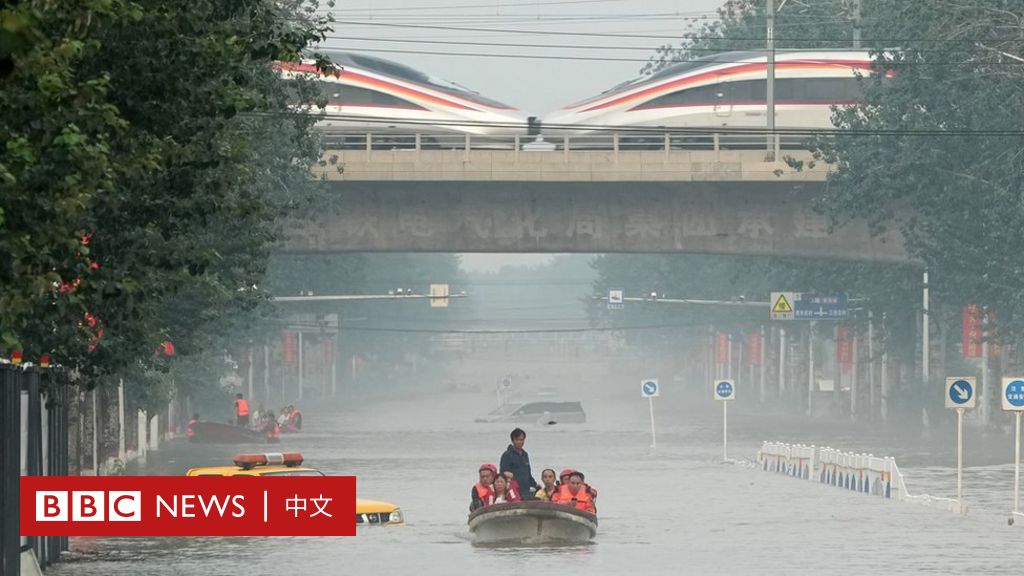Heavy Rain and Flooding Devastate Northern China, Leaving Death and Destruction in its Wake
Beijing, China – Northern China has been pummeled by heavy rain for days, resulting in severe flooding and loss of life. The torrential downpour was caused by the remnants of Typhoon Dusuri (Doksuri), which brought moisture and rainfall northward. According to official statistics released in July, more than 16 million people were affected by floods, typhoons, and other disasters nationwide, with 147 people killed or missing and economic losses exceeding 41.1 billion yuan.
In Baoding, Hebei Province, 10 people have tragically lost their lives, and 18 individuals remain missing. Additionally, in Shulan City, Jilin Province, 6 fatalities have been reported, with 4 people still missing. The heavy rainfall has led to widespread flooding in Bazhou, Hebei, causing discontent among residents who blame the flood discharge for exacerbating the situation. In response, some residents took to the streets to protest. Officials, however, attributed the flooding to rainfall and later praised the villagers for their dedication and sacrifice, promising compensation.
Jilin has experienced continued rainfall, with the average rainfall in Shulan City reaching a staggering 111.7 millimeters. The Yongsheng Forest Farm, the center of heavy rainfall, recorded a remarkable 489 millimeters of rain, which is 4.7 times the historical maximum of 103 millimeters. This has resulted in flooding in villages and towns like Jinma Town, Kaiyuan Town, and Qili Township, affecting over 130,000 people.
To address the escalating situation, the Ministry of Water Resources of China raised the emergency response to flood defense in the Northeast region to Level 3. The Lalin River and upper reaches of the Mudan River, both experiencing floods above the warning level, were the main areas of concern. Heilongjiang Province also reported multiple rivers surpassing the warning level, with the Mangniu River experiencing a water level exceeding the warning level by 3.4 meters.
Hebei Province has also been severely impacted by floods, with 883 townships in 98 counties and districts affected, affecting 2.22 million people. Langfang, Hengshui, and Baoding have maintained a first-level emergency response to flood and typhoon prevention. Baoding City, in particular, has experienced record-breaking rainfall, with an average of 353.1 millimeters and a maximum daily precipitation of 419.7 millimeters. As a result, 10 large and medium-sized reservoirs exceeded the flood limit water level, and 83 small reservoirs overflowed.
The flood situation in Beijing has temporarily stabilized, allowing BBC China correspondent Stephen McDonell to visit Zhuozhou in Hebei Province, one of the areas most severely affected by the heavy rain.
One contentious issue arising from the floods is the flood discharge from the Dongdian flood storage and detention area in Bazhou, Langfang. Local residents have complained that the discharge caused extensive flooding and the destruction of tens of thousands of homes. CCTV, the official media outlet, attributed the flooding to rainfall rather than flood discharge, leading to hundreds of people in Bazhou protesting outside the city government building on August 4. Law enforcement personnel were involved in clashes with the protesters. In response, the Bazhou official issued a letter expressing gratitude towards the affected population and promised compensation in accordance with national regulations.
The economic impact of the floods has been significant, with extensive damage to farmland and infrastructure. The Office of the National Flood Control and Drought Relief Headquarters and the Emergency Management Department reported that the country is still in a critical period for flood control, highlighting the great uncertainty surrounding future typhoons and storms. To provide assistance to the affected areas, China’s Ministry of Finance has urgently allocated 350 million yuan in central natural disaster relief funds, supplementing the previously allocated 170 million yuan.
In July, floods, typhoons, and other disasters affected more than 16 million people nationwide, resulting in 147 deaths or disappearances and necessitating the relocation of over 700,000 individuals. Thousands of houses have collapsed or been damaged, leading to direct economic losses exceeding 41.1 billion yuan. Additionally, July experienced more high-temperature days than usual, with severe droughts occurring in Inner Mongolia, Hebei, Liaoning, and other regions.
As the situation in northern China remains critical, authorities continue their efforts to provide relief and support to the affected population.
